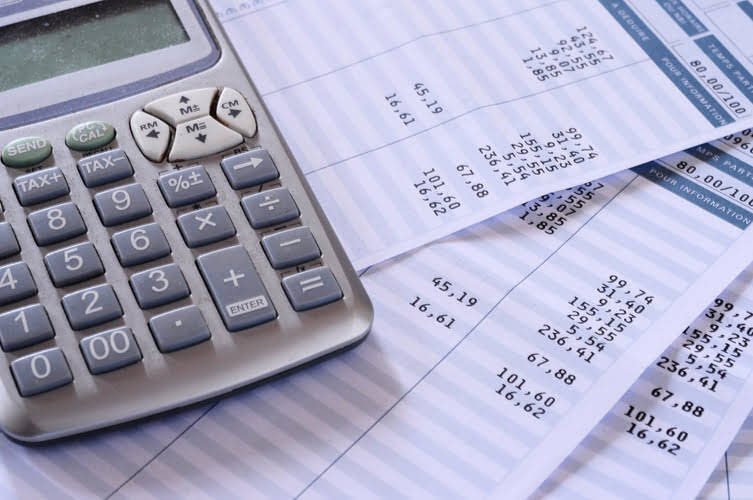

A company that manages its working capital can stay financially healthy even when sales are done for one reason or the other. Working capital can settle obligations when income is not coming in as expected. Once your business has a negative working capital, it is necessary for you to cut all unnecessary spending on equipment, facilities, maintenance, and more to fast track its recovery. Your business can survive periods of negative working capital if it does the following tips. The best way to survive periods of negative working capital is to work on getting out on it. You can have a decrease in the value of your assets and still handle your liabilities.
- Sometimes, though, looking at this number won’t immediately tell you if you have healthy working capital.
- Accrued expenses are costs incurred but not yet paid, such as salaries, utilities, or interest.
- A working capital calculation based on the last 12 months would therefore not be sufficient to support the revenue in the months immediately following the close.
- Learn to calculate a vital financial metric for assessing a company’s short-term operational health and efficiency.
- For instance, suppose a company’s accounts receivables (A/R) balance has increased YoY, while its accounts payable (A/P) balance has increased under the same time span.
- Negative working capital is when the current liabilities are more than the current assets.
- Companies that turn over inventory fast and immediately receive payment from customers – such as most retailers and B2C companies – can operate with minimal or even negative working capital.
Real-World Application: Why NWC Matters in M&A and Financing
Even if a company has a lot invested in fixed assets, it will face financial and operating challenges if liabilities are due. This may lead to more borrowing, late payments to creditors and suppliers, and, as a result, a lower corporate credit rating for the company. Current liabilities are the amount of money a company owes, such as accounts payable, short-term loans, and accrued expenses, that are due for payment within a year. To prevent an erosion in value, it’s best, as the seller, to undergo a QoE analysis https://ttplacement.ca/financial-ratios-cheat-sheet-key-formulas-and-how/ before you begin the sales process, and work to define working capital as clearly as possible in the LOI. Twelve months is the most commonly used timeframe as it incorporates seasonality in the business’s cash flow. If you own a seasonal business, it’s best to specify that an average of the last 12 months will be used as the basis for the NWC calculation, if you can get the buyer to agree.
- The total balance for each relevant operational account at the balance sheet date will serve as the input for the calculation.
- A negative figure may require the company to rely on external financing for its daily operations.
- For emphasis, current assets can be in the form of cash, inventories, and trade receivables.
- If you have healthy working capital or positive working capital, it shows firm control over your business’s most important elements.
- This differentiation is critical for businesses assessing their overall financial position.
How To Build More Working Capital for Business:
A ratio above one shows that the current assets are more than the current liabilities. Current liabilities are the expenses a company is expected to pay up within a specific timeframe (consistently a year). An asset Grocery Store Accounting is regarded as current if it can be converted to cash within a short time (usually not more than a year). For emphasis, current assets can be in the form of cash, inventories, and trade receivables. They can either be in cash or materials, but they can all be converted to currency within a year.

Align Incentives Around Working Capital, Not Just Sales or Profit
Unearned revenue (also known as deferred revenue) represents payments received for goods or services that have not yet been delivered or performed. The current portion of long-term debt is the part of a long-term loan that is due for repayment within the next year. This formula provides a snapshot of the business’s short-term financial health.

A positive Net Working Capital balance indicates that a company possesses more current assets than current liabilities, suggesting a strong ability to meet its immediate financial obligations. This position often reflects sound short-term liquidity, allowing the business to fund its operations, invest in growth opportunities, and manage unexpected expenses. It signifies that the company is not overly reliant on short-term external financing. Net Operating Working Capital (NOWC) is a financial metric providing insight into a company’s short-term financial health. It represents the difference between a business’s operating current assets and its operating current liabilities. NOWC helps assess a company’s ability to cover short-term operational liabilities using assets from core business activities.
Example Calculation #2: NWC at Close vs. the Target
If the opposite is true (you have current liabilities greater than current assets), you effectively have negative net working capital, which is a dangerous position to be in. You do not want to operate with negative net working capital, which must be resolved ASAP. Otherwise, you risk not covering payroll and are at serious risk of potential bankruptcy. This also consists of any debt due within the next 365 days on debt that has a much longer maturity date.


This numerical example demonstrates the direct application of the components identified from the Balance Sheet. The numerical information needed to assess a company’s short-term financial calculate net working capital position is found in its financial statements. Specifically, the figures for current assets and current liabilities are located on a company’s balance sheet. The balance sheet functions as a snapshot, presenting a company’s financial position—what it owns, what it owes, and the ownership stake—at a specific point in time. Within this statement, current assets are typically listed first under the assets section, often ordered by their liquidity, meaning how easily they can be converted into cash. Of course, working capital management and analytics can be a tricky, time-consuming task, especially for small business owners spending long hours on the business itself.
- Working capital is primarily focused on your most liquid (available for use) assets and immediate debts, making it more of a short-term look than other financial statements and metrics.
- To boost current assets, it can save cash, build inventory reserves, prepay expenses for discounts, and carefully extend credit to minimize bad debts.
- When examining working capital, it’s helpful to know the working capital cycle, or the time it takes to convert working capital into cash.
- Decreasing your accounts receivable cycle makes each sale more profitable and therefore increases working capital.
- Working capital is also known as equity capital, working assets, or risk capital.
Any inefficiencies can affect the net working capital, so it’s worth occasionally reviewing these. Where possible, refinancing short-term debt that’s pushing the net working capital into the negative can work to fix the gap. It’s therefore vital to look at a business’ bigger picture before forming an opinion on its finances.
RELATED POSTS
View all
